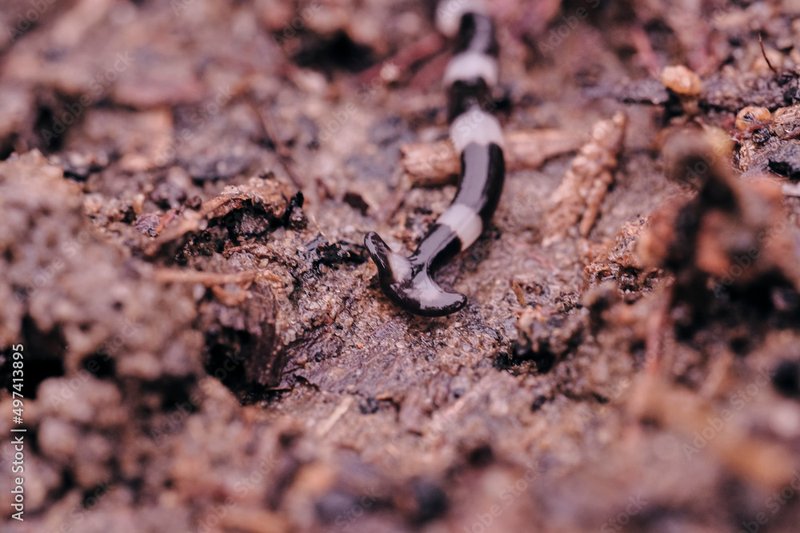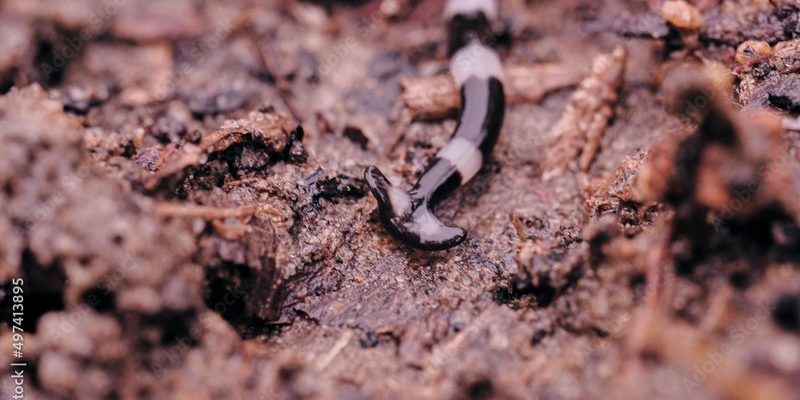
The hammerhead worm, with its distinctive flattened head and striking colors, may look like something out of a sci-fi movie. But it’s no harmless creature. Instead, it’s a voracious predator of soil nematodes, creating ripples of change in the ecosystem. Think of it like adding a new apex predator to a food chain; it can disrupt the balance and lead to unexpected consequences. So, what exactly is happening beneath our feet, and why should we care? Let’s take a closer look.
What Are Hammerhead Worms?
Hammerhead worms belong to the *Bipalium* genus and are known for their unique shape and vibrant colors. They can grow up to a foot long and are often found in tropical and subtropical regions. They usually thrive in moist, rich soils, which makes gardens and potted plants their favorite spots. What’s interesting about hammerhead worms is their ability to reproduce through fragmentation. If you cut one in half, both pieces can regenerate into a new worm. It’s like nature’s version of a magical trick!
These worms primarily hunt soil nematodes, which are microscopic worms that play essential roles in soil health. Nematodes can be beneficial or harmful, depending on the species. Beneficial nematodes help decompose organic matter and promote plant health by controlling pathogens. Unfortunately, hammerhead worms do not discriminate, preying on these nematodes indiscriminately.
Understanding Soil Nematodes
Soil nematodes are tiny, elongated worms that can be found in nearly every soil ecosystem. Their size ranges from about 0.1 mm to 5 mm, which means they’re incredibly hard to spot with the naked eye. They may seem insignificant, but they perform vital functions in our environment.
They contribute to:
- Nutrient cycling: Nematodes help break down organic material and release nutrients back into the soil, making them available for plants.
- Soil structure: Many nematodes create spaces in the soil, improving aeration and water retention, which is essential for plant growth.
- Pest control: Some nematodes prey on harmful insects and pathogens, acting as natural pest control agents.
Without these tiny worms, soil health declines, affecting everything from plant growth to the overall ecosystem.
How Hammerhead Worms Affect Nematode Populations
The rise of hammerhead worms in various ecosystems raises questions about their impact on soil nematodes. Since these worms are voracious predators, they can significantly reduce nematode populations, leading to a cascading effect throughout the soil ecosystem.
When hammerhead worms invade an area, they can:
- Decrease beneficial nematodes: The loss of beneficial nematodes affects nutrient cycling and plant health, leading to stunted growth in crops and garden plants.
- Disrupt soil food webs: When hammerhead worms eliminate nematodes, it impacts the organisms that rely on them for food, creating an imbalance in the soil ecosystem.
- Reduce soil biodiversity: A drop in nematode populations can lead to reduced diversity among other soil organisms, ultimately harming soil health and resilience.
So, it’s not just about one worm; it’s about how that worm can change the entire landscape of life beneath the soil.
Why Should We Care About This Relationship?
You might be scratching your head, thinking, “Why does this even matter to me?” Well, the relationship between hammerhead worms and soil nematodes is crucial for anyone who cares about gardening, agriculture, or environmental health. Here’s why:
1. **Plant Growth:** If beneficial nematodes dwindle, plants can struggle to get the nutrients they need. This can lead to poor crop yields and unhealthy gardens.
2. **Ecosystem Balance:** Healthy ecosystems rely on a balance of predators and prey. If hammerhead worms wipe out nematodes, it can have knock-on effects on other organisms.
3. **Organic Matter Decomposition:** The breakdown of organic matter is vital for maintaining soil health. Without nematodes, this process slows down, leading to nutrient-poor soils.
In a nutshell, when you alter the balance of one small player in the game, the effects can ripple out to affect larger systems. And while hammerhead worms may seem intriguing, their impact on soil health is a serious concern.
Managing Hammerhead Worms in Your Garden
If you’re a gardener or a plant enthusiast, you may be wondering how to handle hammerhead worms if they show up in your garden. Here are a few tips for managing their presence:
– **Hand Removal:** If you spot hammerhead worms, you can remove them by hand. Just wear gloves and place them in a sealed bag or container to dispose of them.
– **Drenching with Salt Water:** Some gardeners recommend using a saltwater solution. Hammerhead worms dehydrate quickly when exposed to salt, so a solution can help control their population.
– **Promote Healthy Soil:** To encourage beneficial nematodes, focus on building healthy soil. Incorporating organic matter, compost, and mulches can help create a thriving ecosystem where good nematodes can flourish.
By being proactive in your garden, you can help maintain the balance between these fascinating creatures and ensure a healthy soil environment.
The impact of hammerhead worms on soil nematodes is a striking example of how interconnected ecosystems are. These unique predators can significantly affect the populations of beneficial nematodes, leading to challenges in nutrient cycling and plant health. As we learn more about these tiny but powerful organisms, it’s important to consider how we can manage these changes in our gardens and agricultural systems.
Ultimately, maintaining the health of our soil ecosystems requires understanding the relationships between all its inhabitants, including the hammerhead worm and the nematodes. By taking steps to encourage balance, we can help ensure that both our plants and the microorganisms that support them thrive, paving the way for a healthier environment. So, let’s dig deeper and keep our ecosystems healthy!

